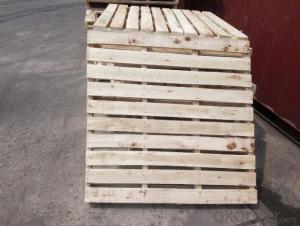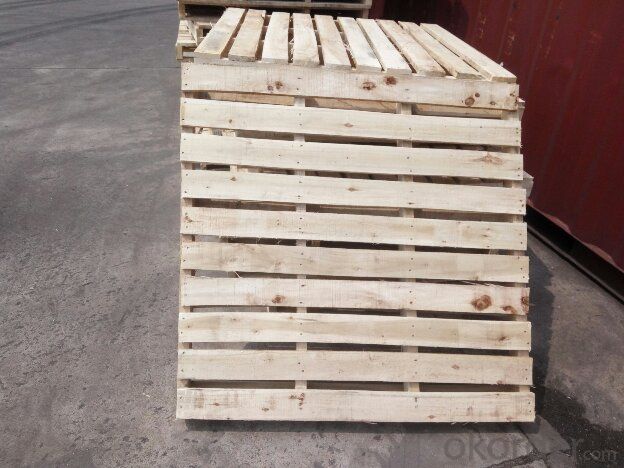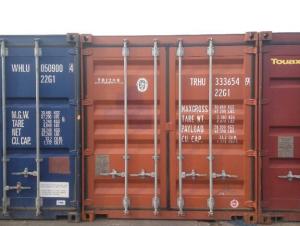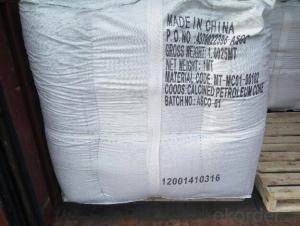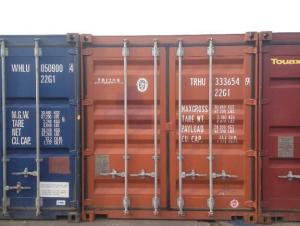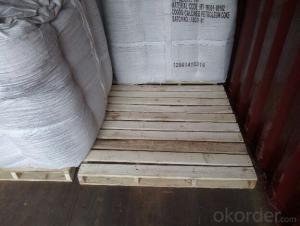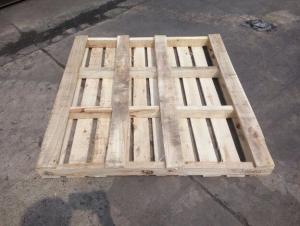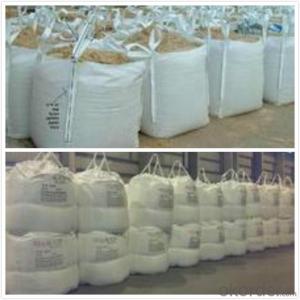CPC as Injection Coke Materials for Steel Plants
- Loading Port:
- Qingdao
- Payment Terms:
- TT OR LC
- Min Order Qty:
- 20.9
- Supply Capability:
- 1012 m.t./month
OKorder Service Pledge
OKorder Financial Service
You Might Also Like
Intrduction
Carbon additive to ningxia production of anthracite as raw material, after washing, crushing, high temperature calcination, filter, etc. Craft refined and become.This is after the anthracite calcination generated high carbon content and low volatile component of the new product, is an ideal raw material to make steel.
Calcined Petroleum Coke comes from delayed coke which extracted from oil refinery. Although Calcined Petroleum Coke contains a little bit higher level of sulfur and nitrogen than pitch coke, the price advantage still makes it widely used during steel-making and founding as a kind of carbon additive/carburant.
Features
In the smelting process for reducing agent. Performance: replace the traditional oil carbon additive, decrease the cost of steelmaking. Features: low ash. low sulfur,low phosphorus, high calorific value. High ratio resistance,high mechanical strength,high chemistry activity. It is mainly used for metallurgy reductant inoculants, casting, refractory materials, machinery, electronics and other fields.Good quality
1) high absorption rate, it can be absorbed up to 90%.
2) absorbed more quickly than other carbon additive; no residue remains in furnace.
3) low Sulfur, the lowest can reach below 0.20%; low nitrogen, normally below 200ppm (0.02%)
Specifications
CPC | |||
F.C.% | 98.5MIN | 98.5MIN | 98MIN |
ASH % | 0.8MAX | 0.8MAX | 1MAX |
V.M.% | 0.7 MAX | 0.7 MAX | 1 MAX |
SULFUR % | 0. 5MAX | 0. 7MAX | 1MAX |
MOISTURE % | 0.5MAX | 0.5MAX | 1MAX |
Pictures


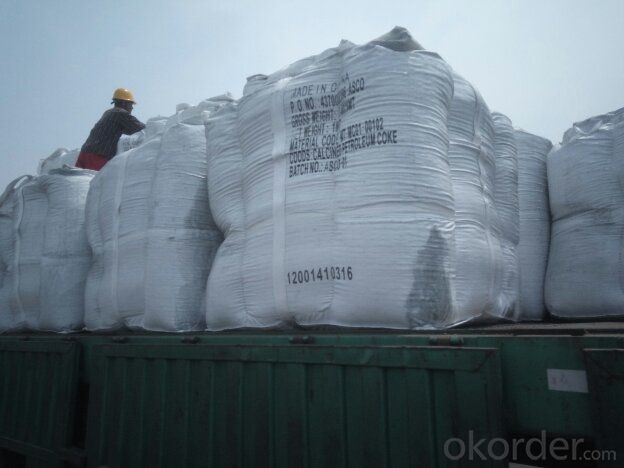

FAQ:
(1)CPC could be as fuel
Petroleum coke is a material relatively low in cost and high in heat value and carbon content with good chemical stability, making it an efficient and costeffective fuel for producing metal, brick and related products.
(2)CPC could be as Graphite Electrodes
Graphite can be produced from lowsulfur needle petroleum coke, which must be heated above 5,432 degrees Fahrenheit.
(3)CPC could be as Anodes
Calcined petroleum coke, often low in sulfur and metallic impurities, is used to make anodes for
the smelting industry.Calcined petroleum coke is mixed with coal tar pitch in the production of
anodes.
- Q: Method for making carbon fiber board
- Method for making carbon fiber sheet:1, first determine the thickness of the plate to be made2 calculate the required number of plies according to the thickness3, and then according to 0 degrees, 45 degrees, 90 degrees, -45 degrees in the order of stacking.4, and then molding it!Now carbon fiber board, in fact, many in the middle are entrained with some glass fiber cloth, of course, there are all carbon, a little more expensive!
- Q: What are fullerenes?
- Fullerenes are a class of carbon molecules that have a unique structure resembling hollow spheres, tubes, or other shapes. They are made entirely of carbon atoms, forming a cage-like structure. Fullerenes can have different sizes and arrangements of carbon atoms, with the most famous one being the buckyball, consisting of 60 carbon atoms arranged in a soccer ball-like shape. These molecules have various applications in technology, medicine, and materials science due to their exceptional physical and chemical properties.
- Q: What are the consequences of increased carbon emissions on vulnerable communities?
- Vulnerable communities bear the brunt of severe consequences caused by the increase in carbon emissions. To begin with, these communities lack the necessary resources and infrastructure to adapt to and alleviate the impacts of climate change. The contribution of carbon emissions to global warming makes it more likely for these communities to experience extreme weather events, such as hurricanes, floods, and heatwaves. Consequently, displacement, loss of homes, and even loss of lives disproportionately affect those who are already marginalized. Moreover, the rise in carbon emissions leads to air pollution, which poses significant health risks to vulnerable communities. Inhabitants of low-income areas often reside in close proximity to industrial plants or highways with high emission levels, increasing their vulnerability to respiratory diseases, cardiovascular problems, and other health issues. This is particularly true for children, the elderly, and individuals with pre-existing health conditions. The consequences of increased carbon emissions also extend to food security. Climate change disrupts agriculture and alters the timing of growing seasons, resulting in reduced crop yields and food shortages. Vulnerable communities heavily dependent on subsistence farming or residing in areas prone to droughts or floods are at risk of malnutrition and hunger. This further aggravates existing inequalities and can lead to social unrest and economic instability. Furthermore, vulnerable communities often rely on natural resources, such as fishing, forestry, or tourism, for their livelihoods. The negative impacts of carbon emissions, such as ocean acidification and coral bleaching, jeopardize these industries, leading to job losses and economic decline. This perpetuates the cycle of poverty and socio-economic vulnerability. In conclusion, increased carbon emissions disproportionately harm vulnerable communities by exacerbating existing inequalities and intensifying the challenges they face. It is crucial to address these consequences through climate mitigation efforts, adaptation strategies, and support for sustainable development.
- Q: How does carbon impact the prevalence of tropical storms?
- Carbon has a significant impact on the prevalence of tropical storms as it contributes to the warming of the Earth's atmosphere. Increased carbon emissions from human activities, such as burning fossil fuels and deforestation, lead to a rise in global temperatures, which in turn fuels the intensity and frequency of tropical storms. The warmer air holds more moisture, resulting in increased rainfall and the potential for stronger hurricanes. Additionally, carbon-induced climate change can alter atmospheric circulation patterns, creating favorable conditions for the formation and intensification of tropical storms. Thus, reducing carbon emissions is crucial to mitigate the impacts of climate change and potentially lessen the prevalence of tropical storms.
- Q: What is carbon coffee fiber?
- The carbon coffee fiber uses the coffee residue left after the coffee and is made into crystal by calcining, then ground into nanometer powder and added to the polyester fiber to produce a functional polyester staple, a coffee carbon fiber. Its main functions are bacteriostasis, deodorization, divergence of negative ions and anti ultraviolet rays.
- Q: Paint paint fluorocarbon paint which expensive?
- After several decades of rapid development, fluorine coating has been widely used in various fields of construction, chemical industry, electrical and electronic industry, machinery industry, aerospace industry, household products. Become the acrylic coating, polyurethane coatings, silicone coatings and other high-performance coatings, the highest overall performance of the coating brand. At present, there are three types of fluoro resin coatings, such as PTFE, PVDF and PEVE, which are widely used.In short, paint is fluorocarbon paint evolved =. = which of the more expensive ones depends on the brand of paint?.Hope the answer helps! ~
- Q: How is carbon used in the production of nanotubes?
- Carbon is extensively used in the production of nanotubes due to its unique properties and ability to form strong covalent bonds. Nanotubes are cylindrical structures made entirely of carbon atoms arranged in a hexagonal lattice. There are two primary methods for producing nanotubes: arc discharge and chemical vapor deposition (CVD). In the arc discharge method, a high voltage is applied across two graphite electrodes in an inert gas atmosphere. This causes a high-temperature plasma arc to form, vaporizing the carbon source material. The vaporized carbon atoms then condense and align into nanotubes as they cool down. This process allows for the controlled production of multi-walled carbon nanotubes (MWCNTs), which consist of concentric tubes nested within each other. On the other hand, chemical vapor deposition involves the decomposition of carbon-containing gases, such as methane or ethylene, on a catalyst surface at high temperatures. The catalyst, often made from transition metals like iron, nickel, or cobalt, facilitates the growth of nanotubes by providing active sites for carbon atoms to attach and form tubular structures. The resulting nanotubes can be either single-walled (SWCNTs) or multi-walled, depending on the reaction conditions. In both methods, the use of carbon as the building block is crucial. The unique carbon-carbon bonding nature allows for the formation of sp2 hybridized carbon atoms, resulting in a strong and stable lattice structure. This structure imparts exceptional mechanical, electrical, and thermal properties to nanotubes, making them highly sought after for various applications in fields such as electronics, materials science, and medicine. Moreover, carbon's versatility enables the production of functionalized nanotubes by incorporating other elements or molecules into their structure. This can be achieved through chemical modification of the carbon framework, allowing for the attachment of different functional groups or nanoparticles. These functionalized nanotubes can exhibit enhanced properties or be tailored for specific applications, further highlighting the importance of carbon in nanotube production. In summary, carbon plays a vital role in the production of nanotubes. Its unique properties, ability to form strong covalent bonds, and versatility make it the ideal building block for creating these remarkable structures with a wide range of applications.
- Q: What is carbon fiber and how is it used?
- Made from thin strands of carbon atoms bonded together in a specific pattern, carbon fiber is a material that is both lightweight and incredibly strong. Its exceptional strength-to-weight ratio surpasses that of steel, while its weight is significantly lighter. The unique properties of carbon fiber make it widely used across various industries and applications. In the aerospace industry, it is a common choice for constructing aircraft components such as wings, fuselage sections, and engine parts. Its strength and lightness contribute to better fuel efficiency and overall performance. The automotive industry heavily relies on carbon fiber for manufacturing high-performance vehicles. Carbon fiber reinforced composites are utilized in the production of body panels, chassis components, and interior trims. By reducing the overall weight of vehicles, carbon fiber not only enhances structural integrity but also improves handling and fuel efficiency. Sports equipment manufacturers also incorporate carbon fiber into the production of sporting goods like tennis rackets, golf clubs, bicycles, and hockey sticks. The material's strength and stiffness result in improved performance, increased power transfer, and enhanced durability. Additionally, carbon fiber finds applications in the construction industry for reinforcing concrete structures, as well as in the manufacturing of wind turbine blades, boat hulls, and various other industrial components. Overall, carbon fiber is the preferred choice in industries requiring high-performance materials due to its exceptional strength, lightweight nature, and versatility. As advancements in manufacturing techniques and cost reduction efforts continue, its use is expanding to a wider range of applications.
- Q: What is the role of carbon in organic chemistry?
- Organic chemistry heavily relies on carbon, a fundamental element that plays a crucial role in the structure and function of organic compounds. Its exceptional ability to form stable covalent bonds with both carbon and a wide range of other elements leads to the immense diversity of organic molecules found in nature. Carbon's capacity to bond with itself and other elements allows for the creation of long chains, branched structures, and ring systems, resulting in the complex and distinctive shapes characteristic of organic compounds. In the realm of organic chemistry, carbon acts as the foundation for many vital biomolecules essential for life, such as carbohydrates, lipids, proteins, and nucleic acids. It serves as the basis for the structural variety and intricacy observed in living organisms. Additionally, carbon's ability to form multiple bonds and its tetrahedral geometry contribute to the versatility of organic compounds, enabling the presence of various functional groups like hydroxyl, carbonyl, amino, and carboxyl groups. Moreover, carbon's aptitude for undergoing chemical reactions, including oxidation, reduction, addition, substitution, and elimination reactions, holds significant importance in organic chemistry. These reactions are fundamental for synthesizing and modifying organic compounds, facilitating the creation of new molecules with specific properties and functions. Carbon's central role in organic chemistry extends further to the study of reaction mechanisms, stereochemistry, and comprehending the behavior and reactivity of organic compounds. In summary, carbon's exceptional properties and its capacity to form stable covalent bonds with other elements serve as the cornerstone of organic chemistry. Its presence allows for the vast array of organic compounds that exist, while its participation in chemical reactions enables the synthesis and manipulation of these compounds. Without carbon, the field of organic chemistry and the study of life's fundamental building blocks would be impossible.
- Q: How does carbon affect the acidity of oceans?
- Carbon dioxide (CO2) is a major contributor to the acidity of oceans. When CO2 is released into the atmosphere through human activities such as burning fossil fuels and deforestation, a significant portion of it is absorbed by the oceans. This process, known as ocean acidification, leads to an increase in the concentration of hydrogen ions in the water, resulting in a decrease in pH levels and an increase in acidity. When CO2 dissolves in seawater, it reacts with water molecules to form carbonic acid (H2CO3). This reaction releases hydrogen ions (H+), which increase the acidity of the water. The increased acidity affects the delicate balance of chemical reactions that support life in the ocean, particularly those involving calcium carbonate. Calcium carbonate is a vital component in the formation of shells and skeletons of many marine organisms, including corals, shellfish, and some plankton. As the acidity of the ocean increases, it becomes harder for these organisms to build and maintain their calcium carbonate structures. This can lead to reduced growth rates, weakened shells, and increased vulnerability to predators and disease. Ocean acidification also affects the entire marine food web. Many species rely on shell-forming organisms as a food source or as habitat, and their decline can have cascading effects on the entire ecosystem. Additionally, acidification can disrupt the balance of phytoplankton, the microscopic plants that are the foundation of marine food chains. Furthermore, carbon dioxide in the ocean can react with water to form bicarbonate ions (HCO3-) and carbonate ions (CO32-). These ions are essential for maintaining proper pH levels and the ability of marine organisms to regulate their internal chemistry. However, as CO2 levels rise, the concentration of carbonate ions decreases, making it more difficult for organisms to access the carbonate they need to build their shells and skeletons. Overall, the impact of carbon on ocean acidity is significant and has far-reaching consequences for marine life. It is crucial to reduce carbon emissions and take measures to mitigate and adapt to the effects of ocean acidification in order to protect the health and biodiversity of our oceans.
Send your message to us
CPC as Injection Coke Materials for Steel Plants
- Loading Port:
- Qingdao
- Payment Terms:
- TT OR LC
- Min Order Qty:
- 20.9
- Supply Capability:
- 1012 m.t./month
OKorder Service Pledge
OKorder Financial Service
Similar products
Hot products
Hot Searches
